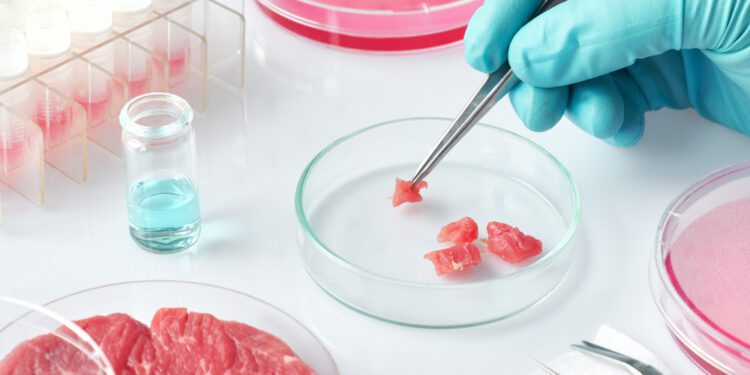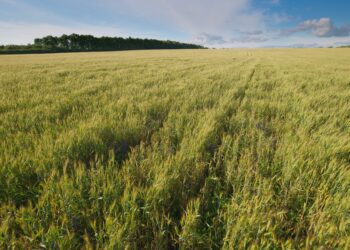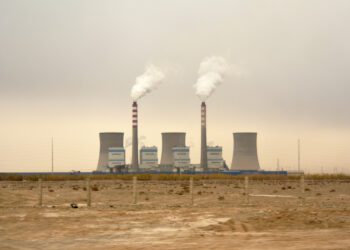In order to lighten the environmental impact of agriculture, we need to look at alternative ways to produce products. Cellular agriculture is a viable solution, but is it safe and is it a comparable replacement for products originally made from animal parts? The answer is yes to both.
Cellular agriculture is a category of lab technology that uses a base material to cultivate a usable finished product. There are two types of cellular agricultural products, which are classified as acellular or cellular.
Acellular products start with a genetic pattern that is inserted into a microbe. Through fermentation, that microbe then produces a protein that is recognized by all cells as being identical to one pulled directly from an animal. Milk is an example of this type of technology. With a starter culture that only needs to be produced once, the casein (milk protein) can then be produced in endless quantities, all without the need for industrial dairy farms that force animals into a constant state of lactation to produce the milk.
Insulin is another result of acellular technology. A substitute insulin was produced from the pancreases of domestic animals in 1922 as an injectable treatment for patients who didn’t produce enough of it. Many decades later, scientists discovered a way to make an identical insulin without the animal sacrifice, simply by combining the human gene for insulin with bacteria. Today’s supply relies on this technology as a safe, consistent and identical replacement for insulin produced inside the body.
Rennet is another ubiquitous example, originally produced from the stomach lining of cows, it’s now widely produced via cultured microorganisms rather than animals.
Cellular agriculture is also known as tissue engineering. It’s the process of growing something from an animal cell. This means, rather than meat or leather coming from an animal, it is grown in a lab. This technology is much newer than acellular technology, but holds promise for the food supply as well as in the medical world. Currently, the tech is being studied as a way to grow skin and organs for specific patients. The process relies on cells from the human body, which are converted into tissues that create an organ the host body won’t reject.
In the supermarket, we’re already seeing meats and fish flood the shelves, many of which are made through cellular agriculture.
Hybrid products
As research continues, the technology is able to make improvements to previously unpopular foods. For example, plant-based chicken offers many benefits for the planet, but it lacks the authenticity of real chicken. The addition of cultured fat, however, could be a game changer that convinces many more people to eat and enjoy it.
So are cellular agriculture products vegan?
Yes and no. There are plant-based products that are either vegan or vegetarian. These work in the same way as the animal products described above, with cells or microorganisms coming from plants instead. Many products do contain animal cells, though, which creates products aimed at a new target market. Where the industry was previously focused on plant-based goods, the technology now provides an option for people who want to be part of the solution, but who aren’t completely ready to give up animal products.
How are the animals affected?
Cellular agriculture requires almost nothing from animals. While cells are required to get the process started, they are collected through a harmless biopsy from a healthy animal. In theory, the collection only needs to happen once since the replication can happen unlimited times from that single sample.
Finding an alternative to relying solely on animals means a solution for major issues like overfishing, animal cruelty and wildlife poaching.
How does cellular agriculture help the environment?
Developing cellular agriculture is currently the single most promising way to ease food insecurity and protect the environment without requiring major change from the planet’s population. The process itself is exponentially more environmentally friendly than raising livestock and crops. Estimates state cellular agriculture uses up to 94% less water, requires up to 80% less land and reduces greenhouse gas emissions by up to 76% compared to traditional food production.
So is cellular agriculture the same as GMOs?
No. Current methods use cells directly biopsied from animals. Those cells are intact and are not modified in any way. Therefore, they are not GMOs.
One defining factor of GMOs is crop modification through selection and breeding to bring out strong qualities that ensure a higher yield, better drought tolerance, sweeter flavor or other profile. In cellular agriculture, cells from the animal can also be isolated based on certain characteristics, and the future of the industry could include modifications to employ better health aspects, such as lower cholesterol and saturated fats.
Are these products safe for humans though?
Maybe more so than traditionally produced agricultural products. They are void of disease, hormones and antibiotics, so with close monitoring, the foods and products developed from cellular agriculture are more consistent, less expensive and safer.
Courtesy inhabit.com. Article available here.












